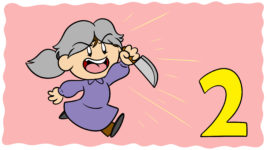Hello authors, and welcome to the second article of our month-long National Novel Writing Month coverage (you can find our NaNoWriMo Week 1 primer here). This week, we’ll be looking at the basics of character development, world building, and structure, providing a basic skeleton for this early draft of your narrative.
As before, keep in mind that NaNoWriMo is about creating a basic first draft – something you’re then going to rewrite and edit and adjust into better and better versions of itself. The intent isn’t to create a work of genius, but to create a defined space in which later genius can occur. For this reason, I won’t be talking as much about the fine details of developing and introducing characters as I will about introducing them at the right time and ensuring they’re functional. Rest assured, we’ll be rounding out our NaNoWriMo coverage with advice on where to start editing, but for now, let’s focus on setting solid foundations for the art to come.
Structuring your story
Assuming you’re a little way into your story, it’s time to start thinking about structure in earnest. When you begin a book, the energy of hooking the reader and introducing a vibrant new world can carry you a long way. Soon, though, that initial burst will fade, and you’ll need something more substantial to keep you writing.
Initial enthusiasm runs out fast, but structure can keep you writing.Click To TweetThat’s not the most vital reason to consider structure, but it’s the reason you should do it now, rather than waiting until future drafts or just writing until you run out of steam. If you reach that point of floundering for what’s next, your confidence is likely to take a knock, so try to set up the next step in advance.
Your story’s structure influences other elements in ways you’ll only notice if you go looking. Most of your pacing, for instance, will rely on the demands of structure. I wouldn’t suggest worrying about pacing yet, that’s something to address in a later edit, but half your work will be done for you if you make some basic structural decisions.
We already discussed the usefulness of quadrant theory in week 1, and it’s not perfect for all stories, but it does suggest four basic quarters to the story. Coming up on the end of that first quarter, it’s time to consider your key event and your first plot point. These are key moments of transition in your story, and they should be placed consciously. This is something that’s covered further in our recommended reading, but it’s worth keeping these approximate landmarks in mind:
Within the first fifth or quarter: Key event and first plot point
Around the halfway mark: The volta or ‘turn’ in the story
Around the end of the third quarter: The ‘all is lost’ moment
Around the end: The climax
I’ll discuss each of these on the appropriate week, but it’s a good idea to consider what these landmarks will involve now. Your story may vary in how strictly it sticks to this structure, but it’s a good idea to at least begin here.
The climax is simply how the main conflict of your story will resolve, and the ‘all is lost’ moment is where it most seems your protagonist can’t win (a similar ‘promising last hope’ moment will work if you’re writing a story where the protagonist fails). The volta is the moment where you story turns – if your story were a sentence, the volta would be a ‘but’. Often, it’s the moment where the protagonist’s chosen way of dealing with a situation falls apart; the fracturing of their group or some other loss of vital support.
The key event and first plot point are actually the hardest landmarks to define, so I’ll handle that in its own dedicated article, below.
Recommended reading:
- Why Writers Like You Need To Know Their Key Event From Their First Plot Point
- How To Write Compelling Conflict Without A Villain
- How To Craft A Fascinating Quest Narrative
What these moments look like depends on your story, and the way you want to tell it, but they’re milestones that you should be constantly writing towards over the coming month.
Defining your setting
At this stage of writing, your setting may seem like a secondary concern. That’s fair and, again, most of the work on your setting will be done in later drafts, once NaNoWriMo is over. As with structure, however, defining a general idea of your setting will seed a consistency that’s much harder to create later on.
This is the world your characters will be exploring, so learning a little about it will give you basic information like travel times and social mores. One easy trick is to begin with a version of a place you know and start making changes, though this can come with the drawback of being blind to your own inherent biases and assumptions.
Knowing a little about your first-draft setting will pay off later on. Click To TweetOne smart way to get a good idea of your setting is to find a few flaws with it. What makes it less than ideal to live in? I’m not talking about the dragon infestation, here, but rather the hard rock that makes it difficult to dig wells or the odd local custom that bugs the protagonist. Inventing a bunch of details will waste your time, but finding a few will help you discover the truth of your setting, whether that means a physical place or a society. What’s wrong here that isn’t there to be fixed by the story, but just as a side-effect of this being a ‘real’ place? Build around that detail and you’ll find a lot of authentic details suggest themselves with surprisingly little effort.
Recommended reading:
- Should Authors Use Familiar Places As Story Settings?
- Here’s Why You Shouldn’t Underestimate The Power Of Setting
- You’re Making A Mistake In Your World Building: Here’s How To Fix It
Establishing your characters
It’s almost guaranteed that, if you edit your story with a genuine eye for removing the unnecessary, not every character from the first draft will make it into the finished manuscript. Often, it’ll make sense to fold certain characters together or cut scenes that were fun but didn’t propel the story forwards.
Yet again, however, now isn’t really the time to be thinking about that. If you can already see how to fold characters together, do it, but don’t feel the need to spend your day interrogating them. Instead, focus on allowing them to express what makes them unique and intriguing. Either it works, and you’ll see what makes them special, or it won’t, and you’ll know to remove them in your first rewrite.
It may seem clinical, but I suggest employing what I refer to as the ‘landlord approach’. Each of these characters it taking up space in your story, so ask yourself how they’re paying for that privilege. What are they doing for you that no other character can and, if the answer is ‘nothing’, what can they do to pay their rent?
Recommended reading:
- How Many Characters Should A Novel Have?
- Writing Funny Characters That Actually Make People Laugh
- The Dos and Don’ts Of Writing Smart Characters
- How (And Why) To Write A Mentor Character
The only potential exception is your protagonist. Your story kind of needs a protagonist, and good stories intertwine their central conflict with who their protagonist is, so if they’re not popping, you probably need to take a look at developing who they are (unless you want a bland protagonist to showcase the world and other characters, of course).
Your characters are taking up room in your story – ask how they can earn it.Click To TweetRemember that, thanks to the halo effect, the way your character is introduced can end up defining them for the rest of the story. Turn this to your advantage, because it can cause problems if left unchecked.
Recommended reading
- Save That Cat! The Easy Secret To Introducing A Hero
- How To Give Your Hero Some Personality
- Reader Proxies: What They Are And When They’re Useful
- Is The Halo Effect Exactly What Your Characters Need?
NaNoWriMo progress
So that was our Week 2 rundown on character, structure, and setting. If it seemed like a lot, don’t despair – at this point in the process, and your story, there’s a lot of ‘table setting’ going on. You need to establish a lot of things at this point so you can play with them in interesting ways later. It can be a slog, and it’s a week that defeats many writers’ NaNoWriMo ambitions, but all the landmarks are clear from this point. Knuckle down, set the table, and you’ll be through the most demanding period NaNoWriMo has to offer.
As ever, I’ll be answering any questions or concerns you may have in the comments, and we’ll be back on Monday with our Week 3 primer (after our other great articles on Wednesday and Friday, that is). Until then, keep writing, and good luck meeting your word count for the week!





